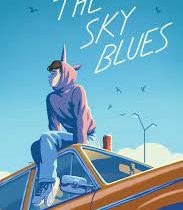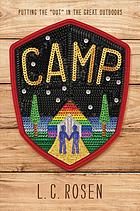 Freeman, Lisa. Honey Girl. Sky Pony Press. 2015. $17.00. 279 pages. HC. 9781632204257
Freeman, Lisa. Honey Girl. Sky Pony Press. 2015. $17.00. 279 pages. HC. 9781632204257
In Honey Girl, Lisa Freeman offers the reader Huanani “Nani” Nuuhiwa, a girl of fifteen dealing with the realistic issues of life in the 1970s. When Nani’s father passes away suddenly, she and her mother relocate to California from Hawaii where she must navigate the world as someone who’s half-Hawaiian, half-white. On top of it, she wants to be “in” with the locals at the beach and must follow their rules in order to fit in. Through the novel the reader sees Nani first go with the flow and then make her own rules as to how she wants to live her life.
Nani has a unique point of view that the reader will appreciate. While she does keep her sexuality a secret from the local teenagers at the beach, Nani’s conflict comes from being both Hawaiian and white. There are times when her white mother claims that you can’t trust Hawaiians and times her Hawaiian friend Annie calls Nani’s mother a haole, a negative term for a non-Hawaiian. Nani has to navigate colliding worlds: her cultural makeup and her everyday existence. She does pick her battles wisely, and, with a little luck, she understands by the end what’s important to her and not just to one particular clique of people.
The reader will also like the realness of how Nani interacts with potential crushes–cute guys and girls. She says what she’s thinking at that moment and doesn’t sugarcoat her feelings. The reader sees the natural progression of her evolving relationships and how her perspective on sex and dating changes by the end. While the beachy “mean girl” set-up may seem contrived, the reader must acknowledge that to a fifteen year old growing up in Hawaii and California the beach may very well be her most significant influence.
The most important element that the reader recognizes in Honey Girl is that there are characters that don’t identify as either straight or gay. Nani herself says that she’s somewhere in the middle by the end of the novel. Freeman offers no labels. Nani has true feelings for Nigel, but she still feels something for Rox, too–and that’s okay. Rox even hints at her own bisexuality but doesn’t put a label on it. Honey Girl tells the reader that not knowing where you fall on the sexual spectrum is perfectly alright–for Nani and in real life.
Honey Girl is definitely recommended for libraries with young adult fiction collections and/or LGBTQIA collections. This reviewer, in contrast to some other reviews, believes that the cultural references are helpful and even makes readers want to look up more information on the famous surfers mentioned or Hawaiian culture. The cultural references also help teens understand Nani’s motivations. Even though they might not necessarily identify with her character, any teen will want to know more about Nani’s journey in dating, making friends and moving up the social ladder, and being the gnarliest girl around.
Judi Tichacek
Public Services Librarian



